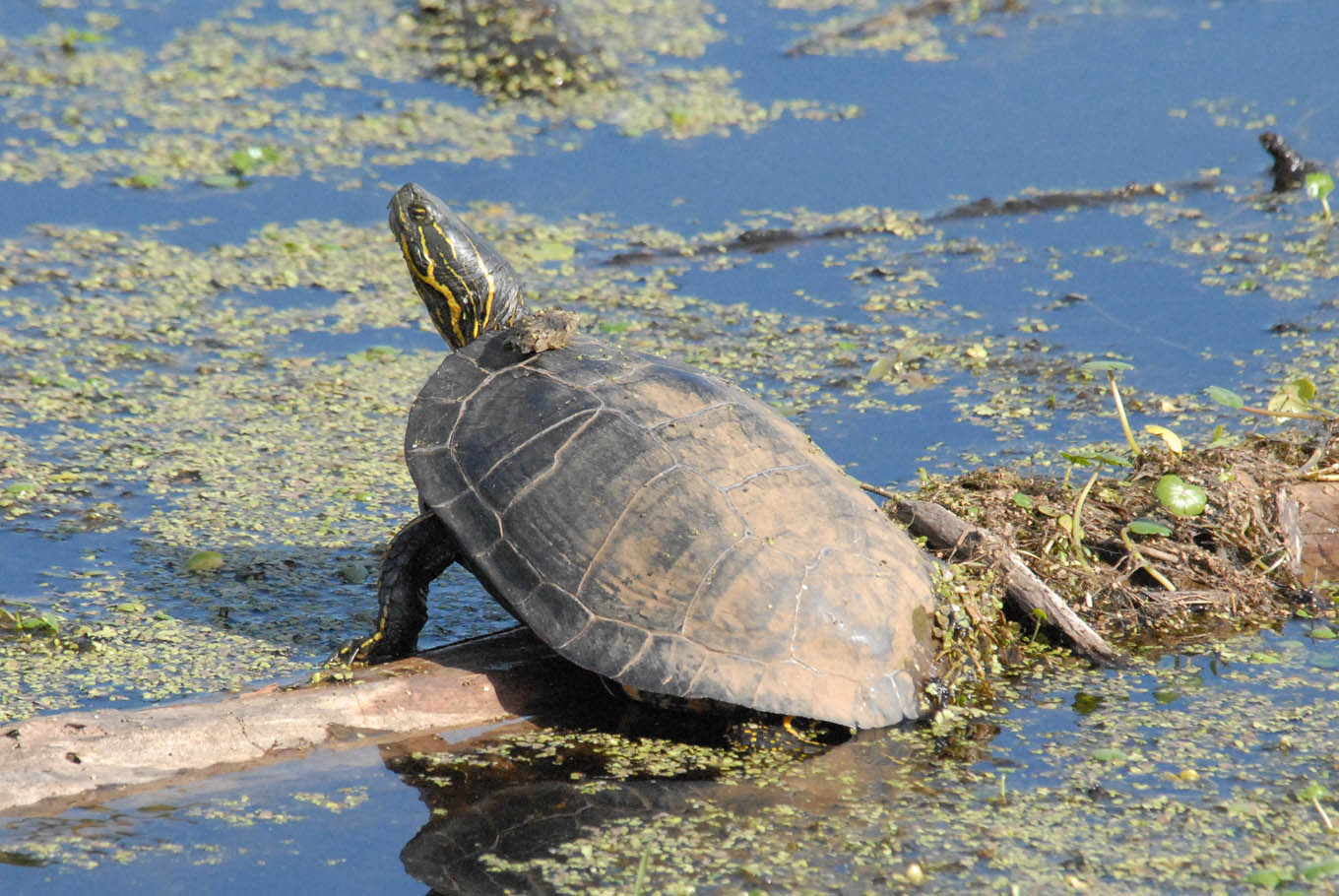Nature Conservancy of Canada wants motorists to stop at all turtle crossings
With more COVID-19 restrictions lifted and Canadians embarking on summer vacations, wildlife sightings — and collisions with vehicles — are more likely to involve turtles.
The Nature Conservancy of Canada (NCC) is asking motorists to give turtles a brake. The conservation organization is shining a light on declining turtle populations in Canada due to collisions with vehicles.
Turtle populations are vulnerable to collisions along roads and highways.
In British Columbia, this is a particular problem with the Intermountain – Rocky Mountain population of western painted turtle, notably in the Okanagan region, where the combination of turtle-supporting wetland and high-traffic roads results in many vehicular turtle deaths each year. Throughout BC the western painted turtle is considered a species at risk by the Committee of the Status of Endangered Wildlife in Canada (COSEWIC).
“Turtles are not just adorable, they’re an important part of wetland ecosystems,” said Kristyn Ferguson, NCC program director, “They help keep wetlands clean and healthy by eating dead plants, insects and animals, and play the role of the wetland janitor.”
Motorists will sometimes encounter turtles on busy roads in major centres and on backroads. Turtles spend most of their lives in a small area. Between May and October, they sometimes wander as far as 10 kilometres.
Like other reptiles, turtles are cold-blooded, so basking on gravel, sandy roadsides or warm asphalt feels good on cooler days. Adult turtles set out to mate in spring and find nesting sites. In late summer and early fall, newly hatched turtles can be seen traveling from where they hatched to a nearby wetland or body of water.
While a turtle’s shell can protect them from predators, it’s no match for a car. When a turtle is struck by a car, it can have a bigger impact than just the loss of that one turtle. Turtles can take up to 25 years before reproducing, and their egg survival rate is very low.
Approximately only two eggs out of 100 become adult turtles. A loss of one adult turtle is the loss of 20 years of development. To maintain their numbers within a population, turtles count on the survival of the adults, especially the females. Studies show that just a five per cent increase in annual mortality can put an entire population at risk of decline.
The Nature Conservancy of Canada (NCC) encourages motorists to slow down when they see a turtle on the road and check to be sure they can safely steer around it. NCC has also produced a video https://www.youtube.com/watch?v=F4aPiN-kGYA with tips on how drivers can help return turtles to safety.
Tips and facts:
- To help a turtle safely cross the road, first make sure the road is safe for you to pull over and help. Put your safety first.
- Move the turtle in the direction it was going, otherwise it will likely try to cross again.
- For turtles that hide their heads in their shells (like Blanding’s turtle and Midland painted turtle), simply pick the turtle up, gently holding it with both hands, supporting its belly and holding the top of its shell (the way you might hold a hamburger), and carry it across the road. Carry it close to the ground — you don’t want to drop it.
- Once you are done moving the turtle, back away and let the turtle be, to avoid causing it stress.
- Pushing or shoving turtles across the road with your feet or a stick is unadvisable. Their undersides are quite soft, and rough pavement can do a lot of damage.
- Other threats to turtles include habitat loss, invasive species and illegal collection for the pet trade.
For a list of turtle species in Canada, their provincial ranges and their status and assessment, please see the list below. In Ontario, all eight turtle species are at risk. In Quebec, five turtle species are provincially designated as threatened or vulnerable.
About Nature Conservancy of Canada
The Nature Conservancy of Canada (NCC) is the nation’s leading not-for-profit, private land conservation organization, working to protect our most important natural areas and the species they sustain. Since 1962, NCC and its partners have helped to protect 14 million hectares (35 million acres), coast to coast to coast. To learn more, visit natureconservancy.ca.


























